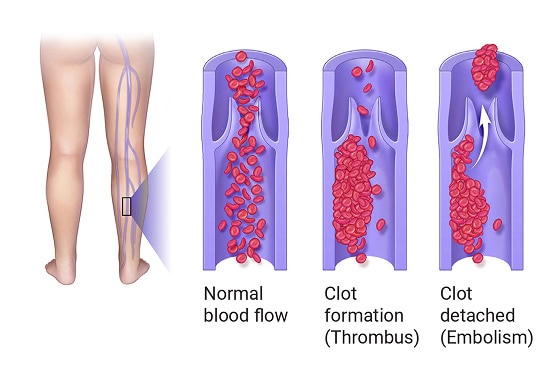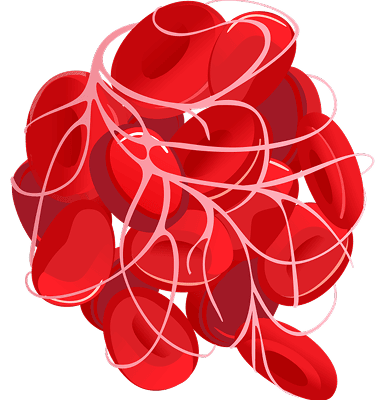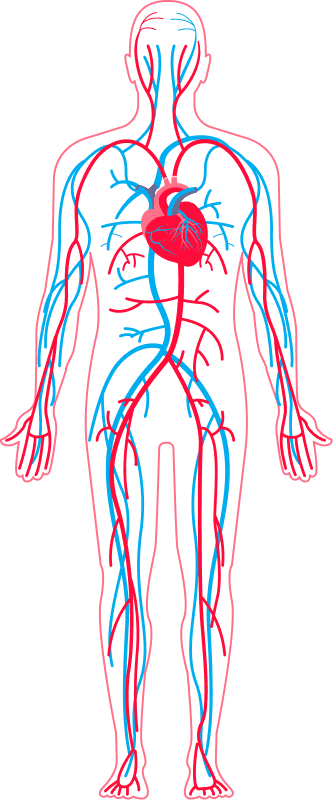VTE stands for Venous Thromboembolism and means blood clots in the veins.
- Vein: a blood vessel, or tube, that carries blood to your heart.
- Thrombo: medical term for clot.
- Embolism: a clot that moves and blocks a blood vessel.


A Blood Clot is a gel-like clump of blood. Clots are helpful because they stop bleeding after you get hurt. They may be a problem when they form inside a vein and don’t dissolve naturally.
Blood clots can form from:
- Slow blood flow
- Injury to a blood vessel
- Blood that clots more easily than normal

There are two types of VTE:
- Deep Vein Thrombosis (DVT): Clots in your legs and arms. Most occur in your legs in the calf area.
- Pulmonary Embolism (PE): Clot that travels to your lungs.
-
About one in three people with untreated DVT will have a PE.
Untreated DVT and other blood clots can also cause blockages in your heart (heart attack) or brain (stroke).